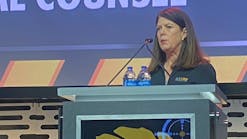The last few weeks have been tough for business. One way we can gauge the impact of COVID-19 – from an automotive lens – is to look at how vehicle travel has changed, thereby affecting the aftermarket. Car counts are down, and it’s no mystery why that is. Fewer people are driving. Period. It’s a challenge for shops, to be sure. At the same time, automotive repair businesses may find they will rebound – and do so sooner – compared with other industries.
A research piece published by McKinsey & Company, a global management consulting firm that serves businesses, governments, and non-governmental organizations, examined how COVID-19 might impact the aftermarket, and the projection wasn’t all bad. In ‘Beyond Coronavirus: The road ahead for the automotive aftermarket,’ researchers tracked the sudden and steep drop in vehicle miles traveled (VMT) and went on to project when and how these miles might rev up again. The report argues the light vehicle aftermarket has typically been the most recession-resistant part of the automotive industry. Afterall, people may stop purchasing vehicles when times are tough. They may even stop traveling to work for a time, but it is unlikely humans will stay put in one place for very long.
“When economic pressure causes drivers to delay purchasing new cars, repairs on their current (and older) vehicles become even more vital,” write the article’s collective authors from the Automotive & Assembly practice. “To appreciate the aftermarket’s resilience, consider the financial crisis from 2007 to 2009. The United States saw GDP drop about 4 percent and the economic repercussions hit automotive purchases hard. Sales plunged 42 percent for new cars and 20 percent for used cars, but the aftermarket experienced only a one percent decline.”
The collision industry echoed this hopeful outlook. In a recent webinar held by 3M, detailing the impact of COVID-19 on the collision industry, four industry experts predicted that the need to get out and away will drive business back to normal by summer. It’s also worthwhile to consider how the pandemic might impact other means of transportation going forward. In the days to follow, some travelers may be less inclined to use public transportation, rideshares, and air travel and instead opt for their private, enclosed cars and trucks.
If your days have been slow, they may not be slow much longer. Are your customers consistent, even through the pandemic? Have you struggled with maintaining business as usual? Let us know what’s happening in your neck of the woods.


